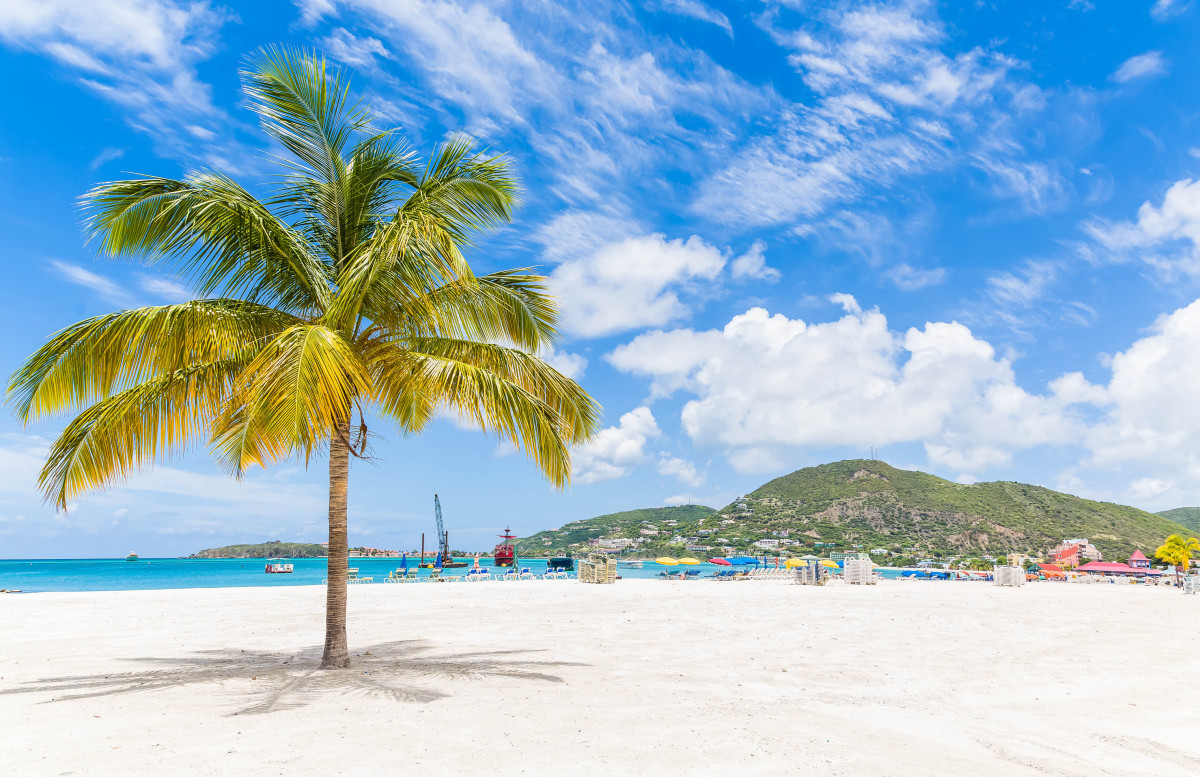A critical analysis of Sint Maarten’s official macro-economic statistics.

Part 2: Tourism Income versus GDP
In this part of our five paper series on GDP research, two elements are looked at.
- Travel Exports
Officially, the Travel Exports number is provided through exit surveys conducted at the ports. Both Cruise and Stay-over visitors are polled when leaving and asked a variety of questions about their spending.
The travel exports number is calculated by average daily spend, multiplied by the average stay length and the amount of visitors.
Over the past years, a substantial amount of reports have become available :
- The Tourism Exit Surveys (TES) 2013, 2014, 2018 and 2019
- Two World Bank reports on tourism recovery from 2019
- The BREA FCCA report on Cruise
- The Balance of Payments statistics presented by the Central Bank of Sint Maarten and Curaçao (CBCS)
- The correlation between these reported numbers and the different sets of GDP figures.
Travel Exports
Where the correlation is concerned, the “Travel Exports” numbers from the Balance of Payments statistics (BOP) of the Central Bank of Sint Maarten and Curaçao (CBCS) are used. The first exercise is testing these numbers against available data from the Tourism Exit Surveys and World Bank reports. This provides a subset of conclusions.
1. Reported travel export numbers by CBCS appears to have been used for the World Bank report
2. When the actual Tourism Exit Survey figures for the relevant years are used, the reported travel export figures are unjustifiably high.
The Balance of Payment travel export data set is the most extensive and likely the one the IMF uses. Before moving on to the second part it is important to look at a couple of caveats where the tourism figures are concerned.
- The Tourism Exit Survey does not account for spending on the French side.
The surveys do not differentiate between the two countries and provide only an aggregate number. TE is the total of Dutch and French side spending. Spending on the French Side belongs to the GDP and banking system of the French side and needs to be subtracted from the Dutch side Balance of Payments.
Arguably the majority of tourism spending is done on the Dutch Side. What is certain is that most tourists enter the island via the Dutch side. The AC Wathey Cruise Terminal and Princess Juliana International Airport virtually account for all cruise and over 90% of stay-over.
The French side has a large inventory of villas as well as several hotels. Grand Case is a popular dining destination. Orient Bay is a hub of economic activity catering to both Cruise and stay-over. In as much as hurricane Irma may have affected the spread, when looking at pre-Irma numbers there can be no doubt that many visitors coming in via the Dutch side spend money on the French side of the island.
Travel Exports are substantially higher than the Tourism Exit Survey numbers that are too high by methodology, because they include the French side spending. Using these travel exports figures are tantamount to inflating income. In this case it amounts to wanting to buy a bigger car and including your neighbor’s income on your loan application.
Using these inflated travel exports numbers carries only downside risk. Without proper justification for the travel exports figures it is easy to conclude that they are in fact much lower than reported.
- Travel Exports not an Export of a Service
Another concern does not affect the travel exports figures but is a consideration for GDP methodology. The travel exports number is seen as an “export of a service”.
Sint Maarten does not use Supply and Use tables nor Tourism Satellite accounts in their GDP calculations. A fact is that a lot of the products tourists consume and purchase on Sint Maarten are imported.
Within the Balance of Payment statistics this would imply that the export of (imported goods) is much higher and the service element lower.
If a tourist buys a $200 watch on St. Maarten, is that a $200 service provided? That watch was imported. At best you could argue that the gross profit on the watch is the service provided by the vendor.
Besides the Production Value added GDP there is the expenditure GDP. The two should match. In looking at the 2017-2018 sets we see a higher GDP (value added / income/profit) we do not see higher domestic expenditure or an import versus export balance. What we do see is a substantially higher capital formation (savings and investments)
If a higher percentage of goods imported are actually re-exported by selling these to tourists that leaves less room for “local consumption” of imported goods. Less local consumption implies a lower GDP, not higher.
Correlation of GDP sets and travel exports figures.
When correlating the GDP set 2017 to travel exports figures we see a ratio of around 80%, dropping to 60% in 2017. In the subsequent series (2018 and 2020) we see a considerable drop in the travel exports/GDP ratio of about 25% for the 2014-2017 periods.
This implies that there was a lot more value added than initially projected and this was not a result of tourism expenditure. With the likelihood that travel exports are already estimated too high, there should be a proper justification for this substantial decrease in the travel exports/GDP ratio.
The question begs why the GDP by expenditure figures are not included in the latest dataset.
We suppose it is because the “net capital formation” would have blown figures out of any reasonable proportion.
When Tourism expenditure is considered a service income instead of a goods export. Statistically this leads to more income earned and higher local expenditure.
Where now, a vendor imports a $150 watch and exports it by selling it to a tourist for $200, adding $50 in value on the transaction, Sint. Maarten measures the import as $150, the $200 spent by the tourist as a service, $200 in value added and subsequently considers that the $200 is spent in the domestic economy as expenditure. The watch remains in inventory and amounts to gross capital formation, again inflating GDP in a fictitious manner.
There is no disagreement that Sint. Maarten’s economy is largely tourism dependent on the one hand and largely import dependent on the other. Both local as well as tourism expenditure is import dependent. With the substantial drop in tourism post Irma and during the pandemic the economy was down substantially.
That a certain amount of GDP was substituted from travel exports by insurance payouts and liquidity support is perfectly acceptable, this however cannot extend back into the pre-Irma years and does not justify the substantial increases in the earlier periods.
There needs to be a clear and transparent justification for the move away from the historic travel exports/GDP correlation to a GDP that is 43% higher than the current travel exports number justifies. A travel exports that is overstated based on the corresponding evidence presented in the exit surveys. Tourism Exit Survey numbers that do not take French side expenditure into account.
Barring any transparency in the establishment of the GDP figures, the new sets should be rejected as being unfounded and having no bearing on reality.
When actual Tourism Exit Survey figures are used we see a drop from an 80% travel exports/GDP ratio to 30% in 2019. This would imply that Sint Maarten was highly successful at diversifying the economy. It is however more likely that economic activity is a lot lower than the official GDP statistics indicate.

